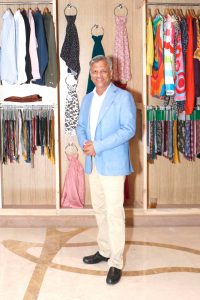
By Jayaraman Sethuraman
Sustainability has not only become a key consideration for consumers and brands alike, it has also become one of the biggest and most consistent trends the fashion industry has ever observed. For consumers, this has evolved over time to include other considerations, such as comfort and longevity. Materials that can tick most boxes are preferable for consumers but can be hard to come by due to several reasons. For example, the sourcing of natural fibers has become more unstable as global supply chains have faced challenges in recent times. Extreme weathers caused by climate change has also hampered the crop yields of raw materials, causing supply instability.
The price of cotton, one of the key cellulose fibers used in the market, has been fluctuating in recent times due to a lack of acreage, yield, climate change, low opening stock as well as increased production cost caused by a rise in energy price and shipping costs. As prices continue to fluctuate, retailers and manufactures are increasingly looking for quality alternatives with more price stability.
While supply chain players have the option of synthetic alternatives, they do not address the need of consumers who are becoming increasingly aware of the shortcomings of synthetic fibers. Known to be more breathable than synthetic fibers and bring more comfort to users, there is a rising demand for cellulose fibers to cater for both comfort and sustainability in textile products, opening the door for wood-based fibers to be viewed as an alternative to cotton.
As a wood-based cellulosic fiber, viscose is often preferred by price-sensitive spinners and fabric markers in the market. Out of the 7 percent wood-based cellulosic fibers consumed globally, 76 percent of the fibers are viscose. Despite the popularity, viscose has historically been perceived to have a negative impact on the environment due to the methods adopted by many manufacturers, where toxic chemicals and non-renewable energy sources are often used to process the fibers.
Hence, to reduce environmental footprint of finished products, it is important to look into the sourcing and production process of the viscose fiber. For instance, the wood and pulp used in the production of LENZING™ ECOVERO™ viscose fibers come from certified and controlled sources following the stringent guidelines of the Lenzing Wood and Pulp Policy. In addition, the production process of Lenzing Ecovero branded specialty viscose fibers has up to 50-percent lower water impact and up to 50-percent lower carbon emissions when compared with conventional viscose fibers, as confirmed by the Higg Material Sustainability Index. Certified by EU Ecolabel for textile products and ranked among the top global viscose producers in the world, Lenzing Ecovero offers a sustainable eco-viscose choice that answers consumers’ need for comfort and sustainability.
Editor’s Note: Jayaraman Sethuraman is senior commercial director for AMEA & NEA textile business, Lenzing AG, Austria.
November 22, 2022




